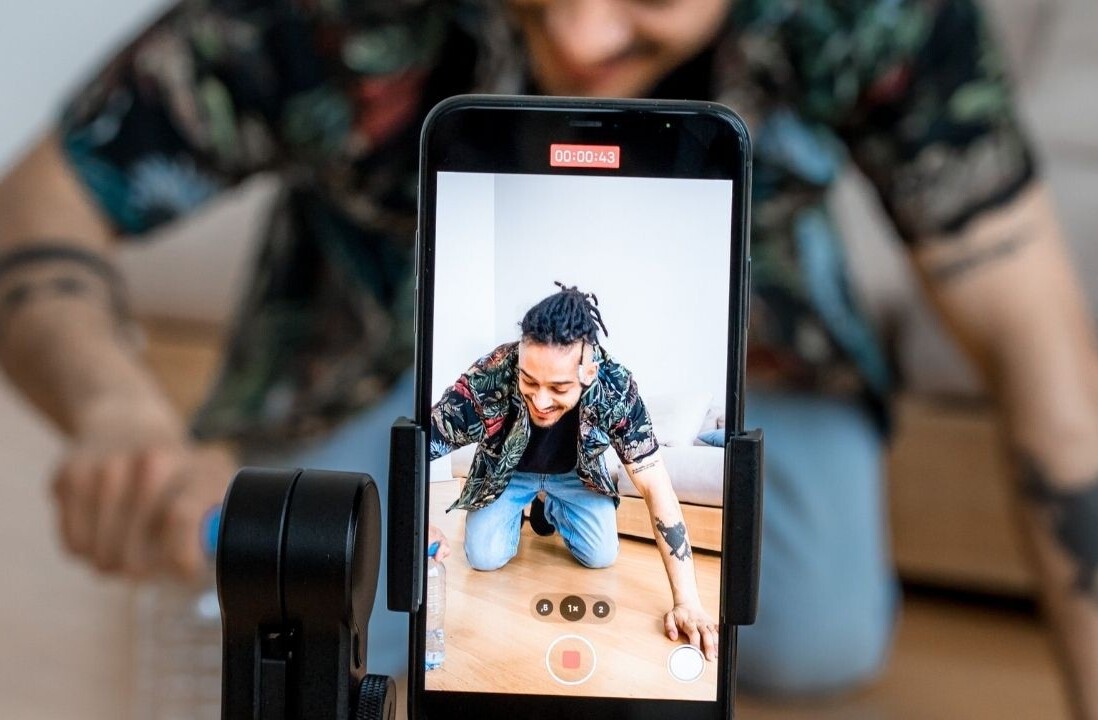
Chances are, when you think “open,” “social,” and “sharing,” your doctor, lawyer, and financial person are probably not at the top of your list. These are the people you trust your most intimate details with, and it’s exactly this discretion that you’re paying for.
But doctors, lawyers, and financiers are people too; shouldn’t they have their fair voice in the exchange of information? Isn’t one of the awesome things about social media the sharing (and caring), the discovery of something new, and the knowledge gained from others? When it comes to these three fields of work, each has it’s own set of what can and should be shared, and what’s off limits.
Doctors

Of the three professions, doctors might be the hardest hit by traditional and new media when it comes to their usage of social media. We’ve all heard the horror stories of doctors posting confidential patient information, whether intentionally or inadvertently, and receiving some heavy criticism for it. Dr. Alexandra Thran of Westerly Hospital in Rhode Island was fired and reprimanded by the state medical board for posting information to her Facebook account. A third-party figured out whom she was referring to, and she promptly removed the post. However, the damage was done, and with one click of a “post” Dr. Thran was in hot water. It’s exactly this type of wrongdoing that has many physicians scared stiff to enter the social media realm according to Dr. Kevin Pho, MD of KevinMD.com.
“You always hear about doctors getting into trouble because they reveal patient information, they break patient privacy, or doctors and nurses blog about some celebrity that they saw.” But that doesn’t mean that these professionals can’t take an active interest in participating in social media. “8 out of 10 Internet users are looking for medical information online, but only 25% of these individuals are checking the source of this information. There’s a role for doctors to get online and guide patients to better and more reputable sources of information,” says Dr. Pho. “If doctors only go so far as to establish a LinkedIn or Google profile, they’d be head and shoulders above 90% of their peers.”
Looking at Dr. Pho’s Facebook and Twitter feeds, it’s clear that he’s taking his own advice. While the majority of his updates are links back to his blog, he’s clearly taking the lead on providing sound medical advice to concerned and interested consumers. While the social media activity might be just a driver, one look at the back and forth in the comments section on the blog proves that there’s a very open and transparent dialogue going on.
To address the question of what’s OK, and what’s not, the American Medical Association has also published it’s guidelines on Professionalism in the Use of Social Media, which reads more like a list of common sense, but fair enough, I’d rather have my doctor more concerned about the latest in microinvasive surgery techniques over Microsoft’s new operating system.
Horror stories aside, there is one group of healthcare professionals who are putting the medium to good use, and (hopefully) clearing up a lot of age-old preconceived notions, and that’s dentists. Jason Lipscomb, DDS points out that social media has been quite helpful, not only to his own practice, but to a wide number of other dentists. While he admits that sharing the intimate details of one’s latest root canal doesn’t and shouldn’t make for outstanding social media content, he and others are using the medium to change opinions about the men and women behind the mask.
“One area in particular that’s been very helpful in dispelling these age-old notions is video. How better to explain a new procedure or method than via video or pictures?”
Ok, perhaps watching an extraction of a molar isn’t exactly your everyday viewing choice, but if your dentist informed you that you needed one, wouldn’t you rather arrive informed about what was about to happen, rather than remain in the dark?
So far, I’ve discussed open social networking activities, but what about closed, private social networks for healthcare professionals? Newdocs.com is a dentist focused social network, but looks a whole lot more like a glorified forum on the inside (sidenote: after researching the site, I’m now greeted with a nice “IP Banned” message…visit at your own peril). Medical Doctors have a host of closed social networks to look at such as sermo.com and ozmosis.com, but both have garnered sharp criticism from each healthcare professional I’ve spoken to.
Dr. Pho comments, “The most important aspect of social media is to connect with patients. I think their greatest strength is also their greatest weakness. The fact that it’s closed from the public really detracts from the power that social media can have by connecting doctors and patients.” Likewise, Dr. Lukas Zinnagl of diagnosia.com adds, “Sermo is clearly big in the U.S., but the benefit for the doctors is highly questionable.”
Lawyers

While not poking around in your inner workings, legal professionals are poking around in your past, and have a number of similar restrictions when it comes to social media usage. Obviously a, “W00T! Just got OJ acquitted!” tweet wouldn’t go down so well, but according to Denise Howell of TwIT.tv’s This Week in Law, there’s an entire realm of fear of the unknown, lack of training, experience, and common sense that apply to legal professional’s usage of social media.
Given the nature of their work, lawyers are put in a unique position amongst the three profiled professions, as they are the only group whose social media activity, “can, and may be used against you in a court of law.” Sure, we’ve all heard the stories about Facebook leading to so and so cheating on their spouse, etc., but when you’re a lawyer, sharing an average, “Working round the clock on this project at the office,” post could take on a very different meaning within the legal field.
Moreover, Legal Affairs Reporter Steven Seidenberg presented a strong case this past February in his ABA Journal article: Seduced: For Laywers, the Appeal of Social Media Is Obvious. It’s Also Dangerous. He chronicles Florida Attorney Sean Conway, who’s efforts to expose what he believed to be a denial of a speedy trial blogged that Broward Country Court Judge Cheryl Alemán is an “Evil, unfair witch,” “seemingly mentally ill,” and “clearly unfit for her position and knows not what it means to be a neutral arbiter.”
Again, this appears to be something more of a case of common sense, rather than a question of is this legal, or is it not?
“Remember that opposing counsel, adverse parties, your own clients, your potential clients, and even judges will be reading your social media feed,” comments Tyson Snow, ESQ of Mumford West & Snow.
To combat any misgivings, both Snow and Howell recommend to lawyers that if you can’t share it in another context, or wouldn’t want mom to read it, it’s a no-go for the social media realm. “Everything else is a question of judgment, taste, and common sense,” says Howell.
But just because I’m bound to my practice or firm, does that mean that I’m cut out of the social media circle? Not necessarily. In the case of personal vs. professional, 9 out of 10 Supreme Court Justices recommend creating two different personas for social media usage. That’s not to say that every single legal professional needs to be involved on the social scene, but for those that want to participate, creating a “pro” account and a “personal” account is highly recommended.
Snow provides a prime example, whereby he’s not been bound by any legal reasons, but by personal responsibility. He informed me that he takes his tweeting very seriously, and strives to provide value with each and every tweet. However, when his beloved BYU Cougars drive 85 yards down field and score a winning touchdown, it’s a moment of pride and twitter worthiness, but not exactly on point with his established, legal based account. “While allowing the two areas to bleed together is beneficial to a certain degree, your followers come to know you as an actual person, too much spillover can lead to distractions and lack of engagement.”
For lawyers working in large firms, Denise Howell has a unique approach. She says that in her experience large law firms often fail at social media, “Firms don’t handle social media tools well as marketing or communications tools. I’m not usually very impressed by their use of other marketing and communications tools, either.”
When it comes to firms’ management of and strategy towards social media, Howell calls upon executive committees and policy makers to read The Cluetrain Manifesto cover to cover at least three times before they even begin to start forming opinions about how, when, where, and why representatives should use social media. When asked about splitting accounts, Howell references the Cluetrain again, and says for those that haven’t done the requisite reading, divvy up those accounts. For those that have done the reading put it to use! “There’s no real need to bifurcate – and a lot to be gained, in terms of genuineness and trustworthiness, by not doing so.”
Just as with medical professionals, the legal focused, closed social networks abound. Each one has it’s own unique set of features and functions, with JD Supra, Avvo, Martindale, and LegalOnRamp leading the charge. Again, similar to both Pho and Zinnagl’s responses, these closed, lawyers only social networks drew criticism from the panel. While they provide benefit for lawyers to lawyers, Howell comments, “I find them very insular, and much prefer public-facing, instead of lawyer-facing, communications.”
Financiers

Financial professionals present an interesting case. On one side of the coin, just as doctors and lawyers (and many of the rest of us), they’re using social media to further promote their business and services. On the other side of the coin, communicating with the public, if done even slightly incorrectly, can have damaging consequences.
Earlier this year American Century Investments released their second annual Financial Professionals Social Media Adoption Study (PDF) that’s packed full of numbers indicating that social media usage amongst financial professionals is on the rise. No surprise, Facebook and LinkedIn took the top spots with 71% and 51%, respectively.
Now it’s not so much the former, but the latter where financial professionals can find themselves in a bit of hot water. According to Coyle Asset Management President and Financial Advisor Gary Klaben, “In the securities industry we are not allowed to receive testimonials. Therefore, the “social” part of social media takes on a totally different meaning for us. For instance we are not allowed to have clients or prospects on our LinkedIn network. If anyone writes a recommendation this is seen as a testimonial.”
Hearsay Social Founder and CEO Clara Shih provides further clarification, “Currently, RIAs have an even stricter standard about testimonials under Rule 206(4)-1 of the Investment Adviser’s Act of 1940: Advertisements cannot “use or refer to testimonials (which include any statement of a client’s experience or endorsement).” This applies to advertisements in print materials and advertising on electronic forums like a LinkedIn profile.”
So we’re in the clear so far as we avoid testimonials on LinkedIn? Yes and no. Based on the way Facebook operates, there’s no clear-cut was of defining what a testimonial might be. As a professional network, LinkedIn comes right out and specifically encourages users to ask for customer and peer recommendations, something a judge or oversight committee could easy point to as a violation. When it comes to Zuckerberg’s creation, we enter a grey area, as Facebook doesn’t currently have a mechanism for providing a testimonial beyond “Liking” a professional page, or becoming someone’s “friend”.
So no testimonials, no false or misleading statements, and we’re good, right? Beyond the dose of common sense as prescribed to doctors and lawyers, we all know how financial professionals love books and records, and their social media activity is just the same. The Securities and Exchange Commission’s rules 17a-3 and 17a-4 outline the archiving requirements that apply to all broker-dealers’ and their registered reps. Both Shih and Klaben point out that many financial professionals obtain dual registrations, thus making them both broker-dealer representatives and registered investment advisers (RIAs), and thus having to adhere to the SEC’s archiving requirements.
So if I’m not an RIA or a broker-dealer I can post away, sans archives? Not quite. The FINRA Rule 1230(b)(6) which takes effect on October 17th of this year, effectively extends the compliance requirements past client-facing representatives, and now includes all non-client facing employees, including operations staff.
“Because of all these changes, a lot of financial services organizations are being proactive and training all groups on social media rather than segmenting out the broker-dealer arm. We have encountered firms who were trying to manually archive by assigning members of their compliance or marketing staff to take screenshots of all social media pages once an hour – this very clearly does not scale,” says Shih.
Published just last month, FINRA Regulatory Notice 11-39 (PDF) further clarifies activity in social media by stating that comments, likes, and @replies are considered interactive content, meaning that they do not need pre-approval from a principle, but still needs to be archived as per SEC 17a-3 and 17-a4.
To ensure compliance, Hearsay Social uses private API integrations with LinkedIn and Facebook, as well as a full Twitter integration that ensures financial professions full compliance with SEC rule 17a-3. Similarly, StockTwits provides social compliance to their enterprise customers through the usage of cmp.ly, offering the ability to automatically add a custom disclaimer attached to any activity that hits the social scene.
Because of these stringent rules and regulations concerning the usage of social media, it’s highly recommended, if not an unspoken requirement that financial professionals create two separate social media identities. Most financial professionals will create a Facebook account for their personal sharing and identity, while creating a separate account for their professional usage and identity, complete with all SEC rules and regulations adhered to. The trick here is to firmly draw the line in the sand as to which account gets what information, and not violating any rules, either intentionally or not, on a personal account.
But have you ever tried to create two LinkedIn profiles? According to LinkedIn’s User Agreement, section 7, paragraph B, “LinkedIn may restrict, suspend or terminate the account of any User who abuses or misuses the Services. Misuse of the Services includes … creating multiple or false profiles…” Therefor, financial professionals must exercise even more due diligence when activating a LinkedIn profile (see testimonials above).
Each of these professions present their own unique set of circumstances, but throughout my research 3 common themes ran present through all those that I spoke with:
- A strong desire to genuinely connect with others
- A heavy leaning towards “think twice” before you click that post button
- A disdain for closed social networks
Fortunately or unfortunately, the three profiled professions have legitimate reasons to be involved and active on social networking platforms, but are either bound by fear or tight rules and regulations. For doctors and lawyers, it would appear as though a few hours of proper social media training, and a heavy dose of common sense would go a long way. For financial professionals, very much the same, with the addition of an archiving and compliance tool would cover a number of bases.
Are you a member of the healthcare, legal, or financial industry, or know someone that is? Have you run into any of these issues? How did you overcome them? Or…have your left the building completely? Let’s hear it in the comments!
Interested in learning how religious leaders spend their time on Facebook? Read this: Finding Faith on Facebook.
Get the TNW newsletter
Get the most important tech news in your inbox each week.




